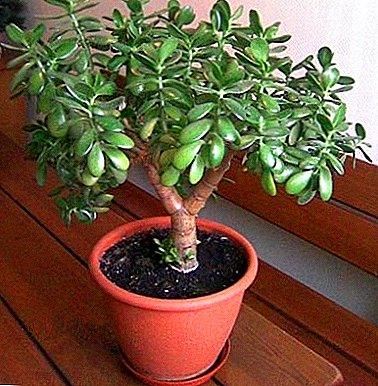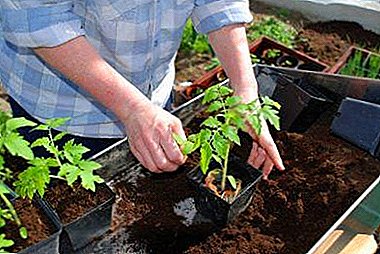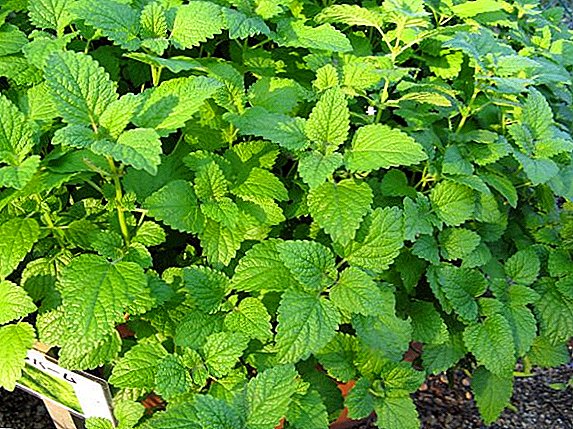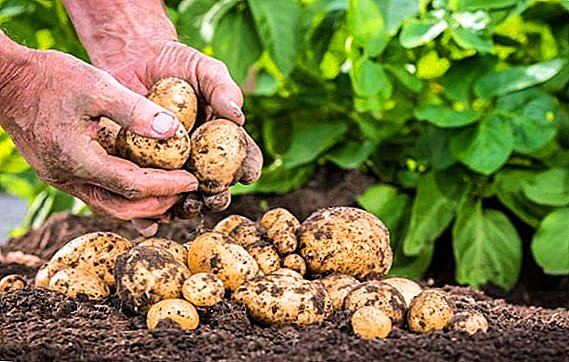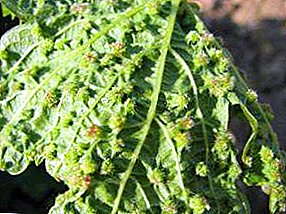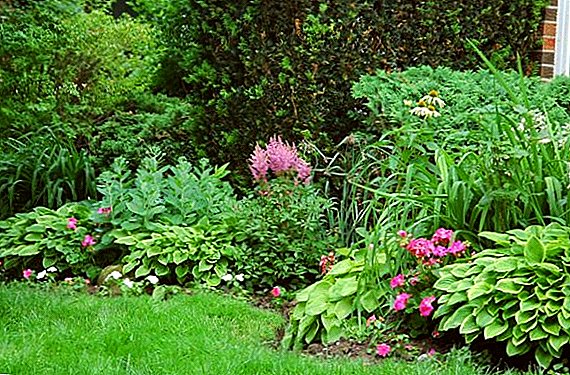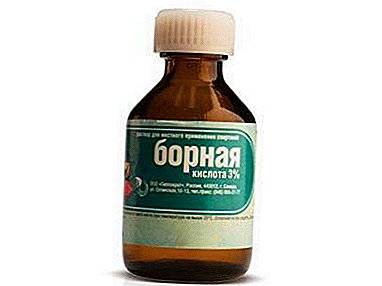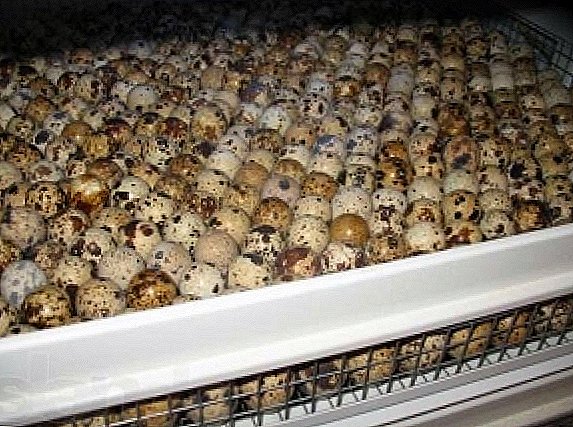
One of the characteristics of domesticated quail females is that as a result of breeding, they completely lost the instinct of hatching eggs.
As an option, you can put quail eggs under domestic doves, hens, hens.
Alternatively, use different variants of incubators for hatching young poultry.
Regardless of the type of incubator you choose, the main aspects of the incubation process itself remain unshakable and unchanged under all conditions.
The process of incubating quail eggs is not complicated, it is easy to master even for a beginner, if you follow the basic rules.
Criteria for choosing quail eggs for incubation
The average hatchability quail during artificial incubation is 70%.
Many factors affect the results of incubation, the main ones are: the quality of eggs (weight, shape, age of laying females and males), ventilation, pressure, temperature, humidity in the incubator, density of planting eggs.
The quality of eggs for incubation largely depends on the content of broodstock, feeding of males and females, the age of the parents, the ratio in the broodstock of the sexes.
To obtain hatching eggs it is rational to contain the so-called incubation livestock (or herd).
Tribal males should be chosen from other herds, as these birds are extremely sensitive to related mating. Productivity at "closely related" mating is reduced to 50%, and the mortality rate of young animals significantly increases.
Females for fertilization are selected at the age of 2 to 8 months. In the future, their egg production is preserved, but the percentage of fertilized eggs decreases, so the eggs of females older than eight months are better used as food.
The peak performance of males lasts for three months (starting from two months of age), after which it is desirable to change them for young.
The incubation livestock is formed by the principle of three - four females per male. These figures are the most optimal, because if the number of females per one male is more, then the fertility rate of eggs significantly decreases, and as a result, the overall hatchability indicator.
Free pairing also has not the highest rates.
The optimum weight of quail eggs for incubation
For breeding quail meat (for example, the breed of Pharaoh) should select eggs weighing 12-16 grams, and for breeding quail producers (egg direction) - 9-11 grams.
Eggs are larger, as well as smaller ones give the worst results during incubation and when growing young. Large eggs can have two yolks, and from small eggs, as a rule, quails hatch less viable.
The correct form of quail eggs for incubation

Do not incubate eggs too small or too large. Eggs must be selected correct, egg-shaped, not very elongated. The presence of a large number of calcareous growths on the shell is not allowed. The shell should be with a small amount of pigmentation, not very dark in color. divorce incubation eggs should not be dirtyAs they begin to deteriorate, infection of neighboring eggs and decrease in hatching occurs in young.
If at the time of laying in the incubator there is no required number of clean eggs, then the dirty ones can be cleaned with a 3% solution of potassium permanganate and allowed to dry.
You can evaluate the quality of quail eggs for an incubator with the help of an ovoscope. This is a kind of X-ray, which gives more detailed information to the quails. With it, you can conduct the culling of eggs unsuitable for incubation. This group includes:
- eggs with two yolks;
- the presence of various types of spots on the protein and yolk;
- small cracks on the shell;
- if the yolk stuck to the shell or fell into a sharp end;
- if air chambers are visible in the sharp end or side of the egg.
Each of us can construct an ovoskop. To do this, take a small cylinder with the diameter of the egg. For the manufacture of suitable cardboard sheet or thick paper or an empty tin can. At the end to install a light bulb.
Eggs should be stored at 18 ° C. For successful incubation you should not keep more than seven days, despite the fact that eggs for human consumption, can be stored for about three months.
If eggs are stored for about ten days, before they are laid in the incubator, the hatchability percentage will not exceed 50%. It is inexpedient to collect the required quantity over a longer period, since the main part of the embryos will already perish in the egg, and the hatchability percentage rapidly decreases with each passing day.
But, there are some breeders who can boast of breeding chicks from the usual quail eggs bought from food stores.
It remains undeniable that hatchability, as well as the viability of the young stock, is very much dependent on the quality and usefulness of the nutrition of the incubation population. The composition of the eggs, the further formation and growth of embryos, the viability of the young are affected by the nutritional value of the feed fed to the brood stock. Embryonic development has defects with a lack of motor activity of birds in captivity, with a lack of green fodder and ultraviolet radiation, as a result of closely related matings.
Quail egg incubation regimes - peculiarities of hatching

If you find information on the Internet that quail hatchability is 100%, do not believe such sources.
It is very simple to disprove this kind of information, even in ideal conditions of detention, the fertility level of quail eggs is no more than 80-85%, and this is an indisputable fact of the biological activity of quails.
The result of artificial incubation rarely exceeds the barrier of 70-80%. These results, in addition to the above reasons, are influenced by such factors:
- structural features of the incubator;
- humidity;
- temperature;
- ventilation;
- pressure.
The incubator can be of different designs and types, the main thing is that it is serviceable, well-insulated and equipped with a thermostat. It is desirable that it contains the function of automatic turning of eggs, but there is nothing terrible, if it does not exist, it is not difficult to do it yourself.
Embryonic development will be good, if you strictly adhere to the required mode.
Incubator Preparation - Necessary Nuances
The incubator itself, before laying it is necessary to prepare, this is primarily done in order to prevent diseases. To do this, rinse it with clean, warm water, and then disinfect with a quartz lamp or formaldehyde vapors, and then dry it thoroughly.
Further It is advisable to put the incubator for 2-3 hours to warm up, it is necessary to pre-configure it and make sure it is in good condition.
How is the laying of quail eggs in the incubator?

There are two ways of laying quail eggs in the incubator: vertical and horizontal.
The percentage of hatchability, with these two methods of bookmarking, is approximately equal. During the rolls, the eggs in the upright position bend slightly (by 30-40 ° C), and the horizontal ones roll from side to side.
The horizontal tab allows you to place more eggs in the incubator, and the vertical - less.
It makes no sense to describe in detail the horizontal tab, with this method it is enough just to spread the eggs on the net. But with vertical laying there are some nuances.
First, to bookmark need to prepare trays, because the egg just can not be put. If there are no trays in the incubator, they can be made from ordinary plastic trays for twenty quail eggs.
In each cell, make a three-millimeter hole (it is very easy to make a hot nail), then put the eggs with the pointed end down, if you put it the other way around, it will worsen hatchability.
How to lay the eggs in the incubator is up to you, if, of course, this aspect is not specified in the instructions of the incubator itself. It all depends on the presence or absence of a mechanism for turning, as well as the size and type of incubator.
Different temperatures for quail incubation at different times
The whole period of quail incubation can be divided into three stages: I - the warm-up period, II - the main one, III - the lead-out period. Below we will deal with each of them in more detail.
Number of days: 1-3 days
Temperature: 37.5 -38.5 ° C
Humidity: 60-70%
Overturning: Do not
Ventilation: Do not
Number of days: 3-15 days
Temperature: 37.7 ° C
Humidity: 60-70%
Overturning: 3 to 6 times a day
Ventilation: there is
Number of days: 15-17 days
Temperature: 37.5 ° C
Humidity: 80 -90%
Overturning:Do not
Ventilation: there is
The first period of incubation - warming

The duration of this period is the first three days. The temperature at this time in the incubator should not be below the mark of 37.5 ° C, the maximum is allowed 38.5 ° C.
Initially, the incubator will warm up slowly, as this happens after laying cold eggs. It is necessary to wait until the eggs are completely warm and only after that to regulate the thermoregulatory, it is not advisable to do this earlier.
During this period it is necessary to very keep an eye on the temperature. If in the first hours you set 38.5 ° С on the regulator, then after a while the temperature can rise to 42 ° С, the main thing is that such jumps should be noticed by the poultry farmers on time and adjusted in time.
Such moments entirely depend on the chosen incubator. Based on this, in the first stages set the temperature that was adjusted during the test of the incubator without eggs. At this stage, there is no need to conduct airing and turning eggs.
The second, or main, stage of incubation of quail eggs
The beginning of the second stage of incubation falls on the third - fourth day, lasts until the fifteenth day. At this stage, regular turning over, spraying, and airing of eggs are foreseen (if there are no such automatic functions in the incubator, then you have to do everything yourself, manually).
Experienced poultry farmers recommend the second stage of incubation turn the eggs three to six times a day. Of course, if the incubator has an automatic function for turning the eggs, it will be easy to do, and if this is not the case, then this frequency will cause you to live near the incubator.
Negligently refers to the procedure of inversion is impossible, since it is necessary so that the embryo does not stick to the shell and later does not die.
It is necessary to ensure that the temperature does not exceed the mark of 37.7 ° С -38 ° С.
It is worth noting that from the sixth to the seventh day, the eggs will heat up independently and give heat to the incubator, for this reason the automatic shutdown of the incubator may increase at a temperature of 38 ° C, and the temperature may still rise to 40 ° C. Therefore, the temperature must be adjusted so that the automatic shutdown occurs at the level of 37.5 ° C, taking into account the possible increase in temperature.
If you are using the device for the first time, it may cause difficulties, further use will bring valuable experience and an understanding of all the features.
The hatchability percentage increases if the eggs are periodically cooled and ventilated during incubation. The process of turning over will also serve as cooling (if it is done manually).
After the third day the incubator should be opened several times a day. for short periods of time. At first, for 2-3 minutes, smoothly, by the end of the incubation period, bringing such ventilation to 20 minutes. Do not be afraid of this natural process, because in nature wild females are forced to leave the nest to drink and eat.
Quail embryos, compared with embryos of other birds, are minimally susceptible to long interruptions to the supply of electricity to the incubator. In situations where the temperature in the incubator could go down to 18 ° C for long periods, the main amount of quail successfully hatched, only a little later than the expected string.
You can understand that somewhere in the process you made a mistake if the quail were not brought out after seventeen days. For complete reinsurance, do not turn off the incubator for another five days.
It is also interesting to read about feeding quails.
Output lines - the third incubation period

From the sixteenth to the seventeenth day begins the hatching period.
On the sixteenth day, from the beginning of the specified period, the eggs must be moved to the hatcher (depending on the design of the incubator).
These trays should not be open at the top, as quails can jump through the sides. At this time, the turning and spraying of eggs completely stop, and the temperature regime is set at 37.5 ° C.
Errorsadmitted during the period of adherence to the incubation regime are visible by the peculiarities of the shell pecking:
- If the curse occurred at the sharp end - this indicates a lack of air exchange.
- The nestling will not be able to get rid of the shell on its own if there was excess moisture.
- The chick will not hatch out of the egg, if the humidity was at a low level, everything is explained by the dryness and hardness of the membrane.
If the quail incubation took place in optimal conditions, then the shell curse will be on the circumference of the blunt end. Do not try to help the chicks hatch, if they do not have enough strength to overcome the egg shells themselves, it is doubtful that such a chicken will survive in the future or will have good health.
Humidity level: we determine the optimal indicators for different incubation periods

In the first and second periods of incubation, it is necessary fill water tanksif any are provided in the incubator device. If they are not there, then you should retrofit such containers yourself.
During the first and second periods, make sure that there is always water in the trays, pour it regularly.
At the second stage it is necessary especially carefully monitor the humidity level in the incubator. The indicator should not fall below 60-70%. Eggs are preferably sprayed once or twice a day. This can be done during the next turn.
It is impossible:
- spray so that water flows.
- sprinkling almost immediately after opening the lid on hot eggs, this will be a shock for the embryo. We must wait until the eggs cool slightly. The turning period will serve as a slight cooling.
- close the lid immediately after spraying, in order to avoid the formation of condensate, it is necessary to do it in a minute and a half, after a light haze.
It is important during the hatching period to ensure that the incubator has high humidity, about 90%. The presence of open containers with water during hatching can cause the death of chicks. Proceeding from this, make sure that quails cannot get into them.


